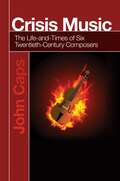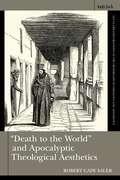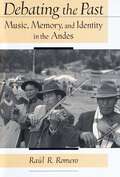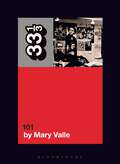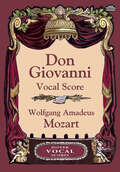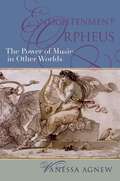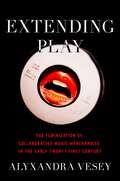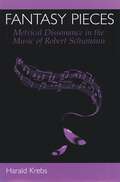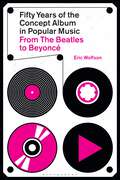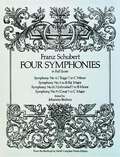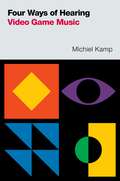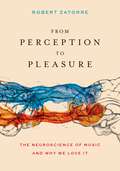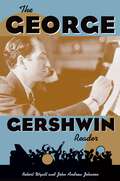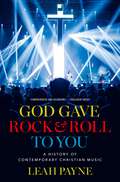- Table View
- List View
Crisis Music: The Life-and-Times of Six Twentieth-Century Composers
by John CapsStory-like chapters profile six twentieth-century reactive composers; not the most famous pillars of the period but lesser-known, perhaps more approachable, characters whose stories span that 1900-2000 period from decadent fin-de-siècle Vienna (Alban Berg, Alexander Zemlinsky) to war-torn Paris (Olivier Messiaen, Arthur Honegger) to the Cold War tensions of East vs. West (Tōru Takemitsu) and late-century Communism (Arvo Pärt). Their stories were all very different crises, and they produced very different kinds of music; each very telling of their composers life and times. Crisis Music presents each brief biography almost like a detective story looking for motives, then spotlights one particular piece of music from each composer that emerged directly out of hard times maybe a political crisis at the time of composition (Hitler marching into Paris or later Communist crack-downs); or some personal angst such as illness or scandal and how that music contains and expresses crisis. In short, the subject for discussion is how context influences content. Such troubled and especially vivid composition, crisis music, can often be most compelling and meaningful for its composer and for its time. Indeed, their music also seems to have a special resonance to share with our own crisis-prone times. And meanwhile, Western music history played-out its own story from late-romantic style to Serialism and Minimalism to the anything-goes Pluralism we hear today. Crisis Music sparks the discussion about how history, biography and music intersects. At the behest of music teachers at secondary and tertiary levels, Crisis Music contains substantive Discussion Questions geared for classroom use.
"Death to the World" and Apocalyptic Theological Aesthetics (T&T Clark Explorations at the Crossroads of Theology and Aesthetics)
by Robert Cady SalerRobert Saler examines the small but influential Death to the World movement in US Eastern Orthodox Christianity. Presenting a case study in theological aesthetics, Saler demonstrates how a relatively small consumer phenomenon within US Eastern Orthodoxy sits at the centre of a variety of larger questions, including:- The relationship between formal ecclesial and para-church structures - The role of the Internet in modern religiosity - Consumer structures and patterns as constitutive of piety- How theology can help us understand art and vice versaUnderstanding "Death to the World" as an instance of lived religion tied to questions of identity, politics of religious purity, relationships to capitalism, and concerns over conspiracy theory helps us to see how studies of uniquely American Eastern Orthodox identity must address these broader cultural strands.
Debating The Past: Music, Memory, And Identity In The Andes
by Raúl R. RomeroThis volume examines how the search for "cultural authenticity," the dispute over the past, and the role of "modernity" have been instrumental in building the regional musical culture of the Mantaro Valley, a central Peruvian region with about half a million inhabitants. How these people have addressed concerns over the loss of ancient traditions by restructuring colonial and pre-Hispanic traditions into new contexts and forms is explored. Covering private and public music making, along with ritual, ceremonial, and popular uses of music, Romero studies the interaction of music and identity. The book is concerned with a modern regional culture, situated and defined in the context of an emergent nation, which is struggling to build a distinct cultural identity and to recreate values.
Depeche Mode's 101 (33 1/3)
by Mary ValleDepeche Mode's 101 is, at first glance, a curious thing: a live double-album by a synth band. A recording of its “Concert for the Masses,” 101 marks the moment when doomy, cultish, electronic Depeche Mode, despite low American album sales and a lack of critical acclaim, declared they had arrived and ascended to the rare air of stadium rock. On June 18, 1988, 65,000 screaming, singing Southern Californians flocked to Pasadena's Rose Bowl to celebrate DM's coronation. The concert also revealed the power of Southern California radio station and event host KROQ, which had turned Los Angeles into DM's American stronghold through years of fervent airplay. KROQ's innovative format, which brought “new music” to its avid listeners, soon spread across the country, leading to the explosion of alternative rock in the 1990s.Eight years after its founding in Basildon, Essex, Depeche Mode, rooted in 1970s Krautrock, combined old-fashioned touring, well-crafted songs, and the steadfast support of KROQ to dominate Southern California, the United States, and then the world, kicking open the doors for the likes of Nirvana in the process. 101 is the hidden-in-plain-sight hinge of modern music history.
Distortion and Subversion: Punk Rock Music and the Protests for Free Public Transportation in Brazil (1996-2011) (Liverpool Latin American Studies #26)
by Rodrigo Lopes de BarrosAn Open Access edition of this book will be available on the Liverpool University Press website and the OAPEN library.At the turn of the 21st century, the Brazilian punk and hardcore music scene joined forces with political militants to foster a new social movement that demanded the universal right to free public transportation. These groups collaborated in numerous venues and media: music shows, protests, festivals, conferences, radio stations, posters, albums, slogans, and digital and printed publications. Throughout this time, the single demand for free public transportation reconceptualized notions of urban space in Brazil and led masses of people across the country to protest. This book shows how the anti-capitalist, anti-bourgeoisie stance present in the discourse of a number of Brazilian bands that performed from the late 1990s to the beginning of the 21st century in the underground music scenes of Florianópolis and São Paulo encountered a reverberation in the rhetoric emanating from the Campaign for the Free Fare, subsequently known as the Free Fare Movement (Movimento Passe Livre, or MPL). This allowed the engaged bands and the movement for free public transportation to contribute to each other’s development. The book also includes reflections on the Bus Revolt that occurred in the northeastern city of Salvador, unveiling traces of the punk and anarcho-punk movements, and the Revolution Carnivals that occurred in the city of Belo Horizonte, an event that mixed lectures, vegetarianism, protests, soccer, and punk rock music.
Don Giovanni Vocal Score
by Wolfgang Amadeus MozartRomance, murder, and revenge -- Don Giovanni offers an ingenious blend of comic and tragic elements in recounting the adventures of a dashing libertine whose trail of seductions and abandonments leads (literally!) to hell. Mozart's masterpiece, a product of his inspired collaboration with poet Lorenzo da Ponte, premiered to public and critical acclaim in 1787. Since then, every great opera singer has assayed one or another of its leading roles, and audiences around the world have delighted in its charms.This addition to Dover's series of vocal scores for the world's most popular operas contains the complete music for voice with a piano reduction of the orchestral part. Handsome and inexpensive, it features large pages and clear type for easy reading. Reproduced from an authoritative edition, and including an English-language version of the libretto, this edition of Don Giovanni will prove an indispensable, practical aid for soloists, chorus members, and rehearsal pianists.
Eleven Late String Quartets: Opp. 74, 76 and 77, Complete
by Joseph Haydn"It was from Haydn that I first learned the true way to compose quartets." — Mozart Eleven Late String Quartets marks the first volume in a projected monumental undertaking — the complete Haydn string quartets. Players and students, music historians, and Haydn lovers will have inexpensive access to a uniform, strongly bound, and clearly printed modern edition of Haydn's finest pieces in complete score. Musicians, music students, and music publishers have a difficult time keeping up with Haydn, whose ceaseless production of original, first-rate work was legendary. He essayed most of the recognized genres, confessing upon several a legacy of expanded possibilities and clearly defined, characteristic form. Among these may be mentioned the symphony, the sonata, and perhaps most notably, the quartet. In a period of 50 years, Haydn (1732–1809) composed over 80 string quartets. Scholars are still debating questions of attribution and even completeness (unknown works by Haydn still turn up) and music lovers have had to make do with scattered, out-of-date, out-of-print editions of a few of the more familiar quartets. Haydn's affinity to the quartet began with his earliest works, when he perhaps more than anyone established the 4-movement structure of chamber music. In common with truly great and complete artists, who surpass early innovation to achieve their greatest work at the end, Haydn's last quarters are his best. This work contains the full scores of Op. 74, Nos. 1–3 (including The Horseman); Op. 76, Nos. 1–6 (including The Bell, The Donkey, Emperor, and Sunrise); and Op. 77, Nos. 1, 2 (including Wait till the clouds roll by). Large, readable noteheads, ample margins for fingerings, etc., opaque paper and permanent binding make this a fundamental addition to music libraries and musicians' repertories.
Embodied Expression in Popular Music: A Theory of Musical Gesture and Agency (Oxford Studies in Music Theory)
by Timothy KoozinTheory in popular music has historically tended to approach musical processes of rhythm, harmony, counterpoint, and form as abstractions, without very directly engaging the intimate connection between the performer and instrument in popular music performance. Embodied Expression in Popular Music illuminates under-researched aspects of music theory in popular music studies by situating musical analysis in a context of embodied movement in vocal and instrumental performance. Author Timothy Koozin offers a performance-based analytical methodology that progresses from basic idiomatic gestures, to gestural combinations and interactions with large-scale design, to broader interpretive strategies that engage with theories of embodiment, the musical topic, and narrative. The book examines artistic practices in popular song that draw from a vast range of stylistic sources, including rock, blues, folk, soul, funk, fusion, and hip-hop, as well as European classical and African American gospel musical traditions. Exploring the interrelationships in how we create, hear, and understand music through the body, Koozin demonstrates how a focus on body-instrument interaction can illuminate musical structures while leveling implied hierarchies of cultural value. He provides detailed analysis of artists' creative strategies in singing and playing their instruments, probing how musicians represent subjectivities of gender, race, and social class in shaping songs and whole albums. Tracing connections from foundational blues, gospel, and rock musicians to current rap artists, he clarifies how inferences of musical topic and narrative are part of a larger creative process in strategically positioning musical gestures. By engaging with songs by female artists and artists of color, Koozin also challenges the methodological framing of traditional theory scholarship. As a contribution to work on embodiment and meaning in music, this study of popular song explores how the situated and engaged body is active in listening, performing, and the formation of musical cultures, as it provides a means by which we understand our own bodies in relation to the world.
Enigma Variations and Pomp and Circumstance Marches in Full Score
by Edward ElgarAuthoritative British editions of the 14 Variations, rich with melody and vibrant rhythms, each revealing a facet of a central theme never fully expressed and each depicting an unnamed friend of the composer. Four of the 5 stirring Pomp and Circumstance Marches are included here as well. Filled with a distinctively English grandeur, they are popular everywhere and have been frequently recorded.
Extending Play: The Feminization of Collaborative Music Merchandise in the Early Twenty-First Century
by Alyxandra VeseyDespite the hypervisibility of a constellation of female pop stars, the music business is structured around gender inequality. As a result, women in the music industry often seize on self-branding opportunities in fashion, cosmetics, food, and technology for the purposes of professional longevity. Extending Play examines the ubiquity of brand partnerships in the contemporary music industry through the lens of feminized labor, to demonstrate how female artists use them as a resource for artistic expression and to articulate forms of popular feminism through self-commodification. In this book, author Alyxandra Vesey examines this type of promotional work and examines its proliferation in the early 21st century. Though brand partnerships exist across all media industries, they are a distinct phenomenon for the music business because of their associations with fan club merchandise, concert merchandise, and lifestyle branding, often foregrounding women's participation in shaping these economies through fan labor and image management. Through textual and discourse analysis of artists' songs, music videos, interviews, social media usage, promotional campaigns, marketing strategies, and business decisions, Extending Play investigates how female musicians co-create branded feminine-coded products like perfume, clothes, makeup, and cookbooks and masculine-coded products like music equipment as resources to work through their own ideas about gender and femininity as workers in industries that often use sexism and ageism to diminish women's creative authority and diminish the value of the recording in order to incentivize musicians to internalize the demands of industrial convergence. By merging star studies, popular music studies, and media industry studies, Extending Play proposes an integrated methodology for approaching contemporary cultural history that demonstrates how female-identified musicians have operated as both a hub for industrial convergence and as music industry professionals who use their extramusical skills to reassert their creative acumen.
A Family Guide to Parenting Musically
by Lisa Huisman KoopsA Family Guide to Parenting Musically is for families who want to make music a more meaningful part of their daily life. It is full of creative ideas about how to engage in musical parenting (doing things to help your child grow musically) as well as parenting musically (using music to achieve parenting goals). Designed for parents, grandparents, caregivers, and friends, this book breaks down activities by age bracket and by various scenarios. Seventy activities offer specific ways to explore the ideas at the core of this book: that all humans are musical, that music can make an important difference in family life, and that there are many ways to be musical. Based on two decades of Lisa Huisman Koops's research and teaching with families, as well as mothering her own four children, A Family Guide to Parenting Musically provides developmental information and research-based discussions in a clear and engaging way. The companion website features author-recorded audio examples of songs, chants, and activities as well as links to Koops's popular Parenting Musically podcast, which provide an ongoing resource to further explore the ideas in this book. The book also includes tips from podcast interviewees, such as Ziggy Marley and Maggie Baird (mother to Billie Eilish and FINNEAS).
Fifty Years of the Concept Album in Popular Music: From The Beatles to Beyoncé
by Eric WolfsonThe concept album is one of popular music's most celebrated-and misunderstood-achievements. This book examines the untold history of the rock concept album, from The Beatles to Beyoncé.The roots of the concept album are nearly as old as the long-playing record itself, as recording artists began using the format to transcend a mere collection of songs into a listening experience that takes the listener on a journey through its unifying mood, theme, narrative, or underlying idea.Along the way, artists as varied as the Moody Blues, Jimi Hendrix, Joni Mitchell, Pink Floyd, Parliament, Donna Summer, Iron Maiden, Radiohead, The Notorious B.I.G., Green Day, Janelle Monáe, and Kendrick Lamar created albums that form an extended conversation of art and music. Limits were pushed as the format grew over the subsequent eras. Seminal albums like the Beatles' Sgt. Pepper's Lonely Hearts Club Band, the Who's Tommy, Marvin Gaye's What's Going On, stand alongside modern classics like Liz Phair's Exile in Guyville, Kendrick Lamar's good kid, "m.A.A.d city," and Beyoncé's Lemonade. Mixing iconic albums with some newer and lesser-known works makes for a book that ventures into the many sides of a history that has yet to be told-until now.
Four Symphonies: In Full Score
by Franz SchubertIn 1978 the music world commemorated the 150th anniversary of Schubert's death, and his great symphonies were widely played and recorded. In this one volume are Schubert's four most popular and most often played symphonies in full score, including the Symphony No. 9, which, according to Grove's Dictionary, is "universally admitted to be his greatest masterpiece." The symphonies are reproduced complete and unabridged from the famous and scholarly Breitkopf & Härtel series, a large and eminently readable edition, and are edited by Brahms. No other single-volume edition of these works is currently available.Included in this book are:Symphony No. 4 ("Tragic") in C MinorSymphony No. 5 in B-flat Major (also known as "Symphony without Trumpets and Drums")Symphony No. 8 ("Unfinished) in B MinorSymphony No. 9 ("Great) in C MajorThe music has been reproduced in a size large enough to be read easily, with large noteheads, wide margins (for notes, annotations, etc.), and on opaque paper with sturdy, sewn bindings. Pages lie flat and will not fall out. The edition is practical for almost any use, whether as a study guide, a reference, or simply a companion for your greater musical enjoyment.
Four Ways of Hearing Video Game Music (Oxford Music / Media)
by Michiel KampFour Ways of Hearing Video Game Music offers a novel account of the ways in which video games invite us to hear and listen to their music. By taking a phenomenological approach to characterize music in video games, author Michiel Kamp asks what it is we hear in the music when we play a game. Drawing on past phenomenological approaches to music as well as studies of music listening in a variety of disciplines such as aesthetics and ecological psychology, Kamp explains four main ways of hearing the same piece of music--through background, aesthetic, ludic, and semiotic hearing. As a background, music is not attended to at all, but can still be described in terms of moods, affordances, or equipment. Aesthetic hearing is a reflective attitude that invites hermeneutic interpretation; ludic hearing on the other hand invites "playing along" to the music, either through embodied movement, or in response to the music's cinematic or theatrical connotations. Finally, in semiotic hearing, Kamp argues that we hear music as transparent symbols or signals that provide information about the state of a game. The book investigates these four categories through detailed case studies of video games from a variety of eras and genres accompanied by gameplay recordings and images on a companion website.
From Idomeneo to Die Zauberflöte: A Conductor's Commentary on the Operas of Wolfgang Amadeus Mozart
by Myer FredmanThis is the first book by an experienced conductor to explore the orchestras contribution to Mozarts greatest operatic works: Idomeneo, Die Entfuhrung aus dem Serail, Die Schauspieldirektor, Le nozze di Figaro, Don Giovanni, Cosi fan tutte, La clemenza di Tito, and Die Zauberflote. It is written for the concert and opera going public who are interested in enlarging their knowledge and appreciation of these masterpieces, but also contains many practical suggestions for aspiring conductors.
From Modes to Keys in Early Modern Music Theory
by Michael R. DoddsFrom Modes to Keys in Early Modern Music Theory addresses one of the broadest and most elusive open topics in music history: the transition from the Renaissance modes to the major and minor keys of the high Baroque. The system Glarean proposed in his 1547 Dodecachordon comprised twelve modes at two transposition levels; the scheme J.S. Bach used to order The Well-Tempered Clavier in 1722 featured two modes at twelve transposition levels. What took place in between? Through deep engagement with the corpus of Western music theory, author Michael R. Dodds presents a model to clarify the factors of this complex shift. The essence of this model lies in the dynamic interplay of three historical-conceptual layers arising successively in the Middle Ages, Renaissance, and Baroque, each layer continuing once introduced. Medieval theorists conceptualized mode along a continuum between tune and scale. Renaissance theorists extended mode from plainchant to polyphony, applying modal theory to such features as cadential hierarchies and contrapuntal imitation. Early Baroque mapping of vocal modality onto the keyboard catalyzed a transformation from the diatonic gamut to the chromatic keyboard as background pitch system, with a corresponding change from ladder to circle as the dominant model for tonal space, culminating in the circle of fifths. Spanning two centuries of music and music theory, and incorporating dozens of diagrams from historical treatises, Dodds provides the first comprehensive study of the transition from the Renaissance modes to the major and minor keys.
From Modes to Keys in Early Modern Music Theory
by Michael DoddsFrom Modes to Keys in Early Modern Music Theory addresses one of the broadest and most elusive open topics in music history: the transition from the Renaissance modes to the major and minor keys of the high Baroque. The system Glarean proposed in his 1547 Dodecachordon comprised twelve modes at two transposition levels; the scheme J.S. Bach used to order The Well-Tempered Clavier in 1722 featured two modes at twelve transposition levels. What took place in between? Through deep engagement with the corpus of Western music theory, author Michael R. Dodds presents a model to clarify the factors of this complex shift. The essence of this model lies in the dynamic interplay of three historical-conceptual layers arising successively in the Middle Ages, Renaissance, and Baroque, each layer continuing once introduced. Medieval theorists conceptualized mode along a continuum between tune and scale. Renaissance theorists extended mode from plainchant to polyphony, applying modal theory to such features as cadential hierarchies and contrapuntal imitation. Early Baroque mapping of vocal modality onto the keyboard catalyzed a transformation from the diatonic gamut to the chromatic keyboard as background pitch system, with a corresponding change from ladder to circle as the dominant model for tonal space, culminating in the circle of fifths. Spanning two centuries of music and music theory, and incorporating dozens of diagrams from historical treatises, Dodds provides the first comprehensive study of the transition from the Renaissance modes to the major and minor keys.
From Perception to Pleasure: The Neuroscience of Music and Why We Love It
by Robert ZatorreWhy do we love music? What enables us to create it, perceive it, and enjoy it? In From Perception to Pleasure, Robert Zatorre provides answers to these questions from the perspective of cognitive neuroscience, explaining how we get from perception of sound patterns to pleasurable responses. The book is organized around a central thesis: that pleasure in music arises from interactions between cortical loops that enable processing of sound patterns, and subcortical circuits responsible for reward and valuation. This model integrates knowledge derived from basic neuroscience of the auditory system and of reward mechanisms with the concept that perception and pleasure depend on mechanisms of prediction, anticipation, and valuation. The first part of the book describes the pathways to and from the auditory cortex that generate internal representations of musical structure at different levels of abstraction, which then interact with memory, sensory-motor, and other cognitive mechanisms that are essential to perceive and produce music. The second part of the book focuses on the functional anatomy of the dopaminergic reward system; its involvement in musical pleasure; the links between prediction, surprise, and complexity; and what happens when the system is disrupted. The book is richly illustrated to help the reader follow the scientific findings. Most of all, From Perception to Pleasure provides an integrative model for a large body of scientific knowledge that explains how patterns of abstract sounds can generate profoundly moving hedonic experiences.
The Gentleman Dancing-Master: Mr Isaac and the English Royal Court from Charles II to Queen Anne (Clemson University Press: Studies in British Musical Cultures)
by Jennifer ThorpThe Gentleman Dancing-Master: Mr Isaac and the English Royal Court from Charles II to Queen Anne is a study of the life of the most significant dancing-master at the late-Stuart court in London. It discusses his use of dance music and brings together, for the first time, reprints of the notations of all his twenty-three surviving dances created for performance at court in the presence of the monarch, including several created to celebrate the birthdays of Queen Anne or named after important courtiers or political events. This study highlights the significance of dance as a central part of court culture, and also the wider context of the London book trade within which Isaac’s notators turned his dances into a publishable form ultimately taken over by John Walsh’s music publishing firm. Using extensive archival and printed sources from his day, the book follows Isaac’s career as a dancer, teacher, and choreographer of sophisticated duets in the fashionable French style, some of which were also performed in the theatre. Isaac, however, was no slavish follower of French fashion, and by careful consideration of the extant dances from the point of view of a dancer, this study also seeks to throw light on Isaac’s often individualistic approach to choreography.
God Gave Rock and Roll to You: A History of Contemporary Christian Music
by Leah PayneAn entertaining history of the soundtrack of American evangelical Christianity Few things frightened conservative white Protestant parents of the 1950s and the 1960s more than thought of their children falling prey to the "menace to Christendom" known as rock and roll. The raucous sounds of Elvis Presley and Little Richard seemed tailor-made to destroy the faith of their young and, in the process, undermine the moral foundations of the United States. Parents and pastors launched a crusade against rock music, but they were fighting an uphill battle. Salvation came in a most unlikely form. Well, maybe not that unlikely--the long hair, the beards, the sandals--but still a far cry from the buttoned-up, conservative Protestantism they were striving to preserve. Yet when a revival swept through counterculture hippie communities of the West Coast in the 1960s and 1970s a new alternative emerged. Known as the Jesus Movement--and its members, more colloquially, as "Jesus freaks"--the revival was short-lived. But by combining the rock and folk music of the counterculture with religious ideas and aims of conservative white evangelicals, Jesus freaks and evangelical media moguls gave birth to an entire genre known as Contemporary Christian Music (CCM). By the 1980s and 1990s, CCM had grown into a massive, multimillion-dollar industry. Contemporary Christian artists were appearing on Top 40 radio, and some, most famously Amy Grant, crossed over into the mainstream. And yet, today, the industry is a shadow of what it once was. In this book, Leah Payne traces the history and trajectory of CCM in America and, in the process, demonstrates how the industry, its artists, and its fans shaped--and continue to shape--conservative, (mostly) white, evangelical Protestantism. For many outside observers, evangelical pop stars, interpretive dancers, puppeteers, mimes, and bodybuilders are silly expressions of kitsch. Yet Payne argues that these cultural products were sources of power, meaning, and political activism. Throughout, she draws on in-depth interviews with CCM journalists, publishers, producers, and artists, as well as archives, sales and marketing data, fan magazines, merchandise--everything that went into making CCM a thriving subculture. Ultimately, Payne argues, CCM spurred evangelical activism in more potent and lasting ways than any particular doctrine, denomination, culture war, or legislative agenda had before.

